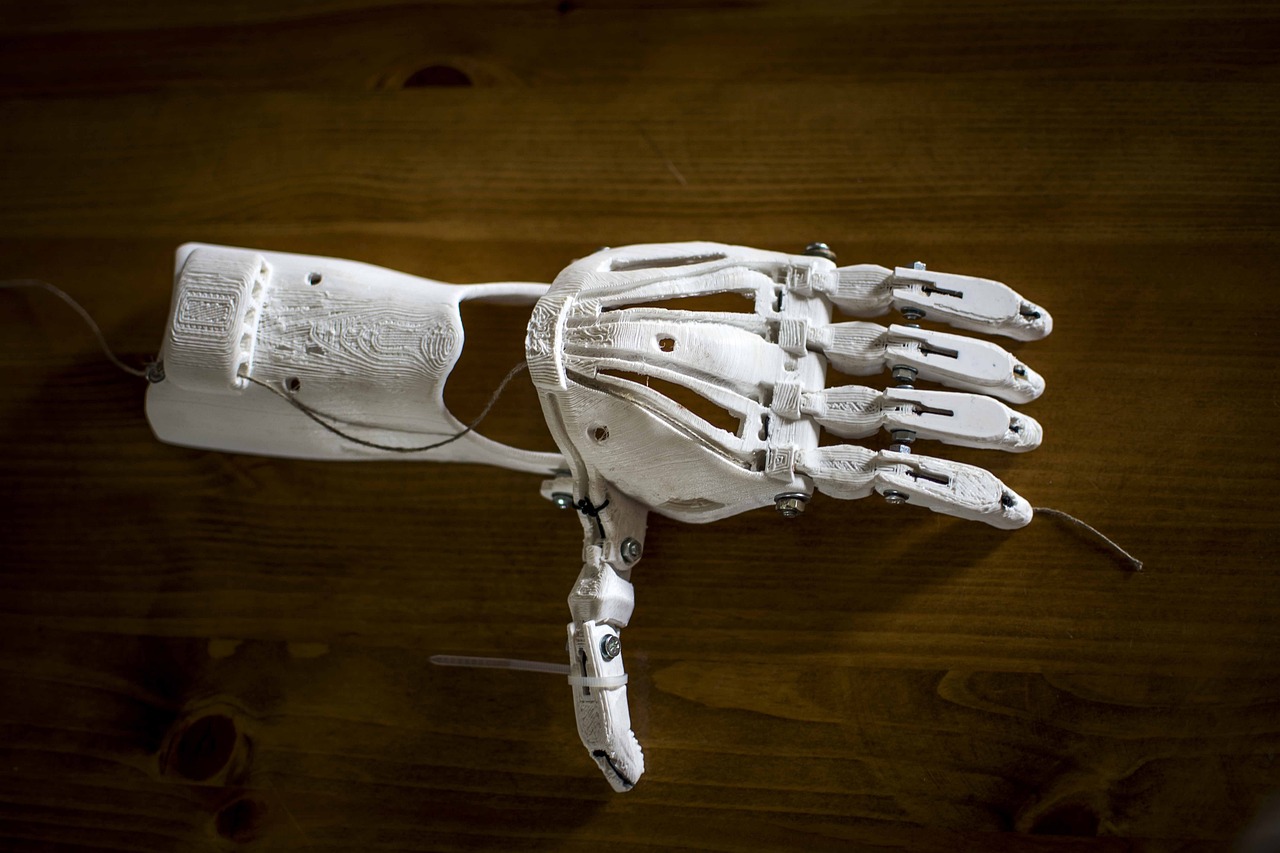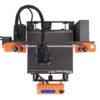You have already seen, we have gone to the length of reviewing each of the 3d printers in detail, separately. Now, we are going to compare them, in this post. The popular 3D printers of 2024, which of course hit the shelves last year. Here, we are going to deeply explain the intricacies of these four 3D printers— the FlashForge Adventurer 5M Pro, the FlashForge Adventurer 5M, the Creality K1, and the QIDI Technology X Smart3.
Let’s break down their specifications, features, and performance to help you make an informed decision –
Imagine you have been a master builder with a magical machine that turns your ideas into real tangible thing— That’s what a 3D printer does, and today we’re comparing four awesome models like superheroes with different powers
#1 Brief Details of These 4 3d Printers
I) Team FlashForge
We have two FlashForge 3d printers in this lineup to compare with them and others. So, here we can say, that, in the beginning that their Adventurer 5M Pro is the latest outing. But, then again, its earlier model Adventurer 5M has never been far behind. Here are the brief intros of each of the two.
a) FlashForge Adventurer 5M Pro
This speedy–3d printer FlashForge Adventurer 5M Pro whizzes out creations (600 mm/s!), can handle tough materials like hot lava (ABS) and stretchy gum (TPU), and has built-in sensors like a robot sidekick to warn if it runs out of filament. It’s a bit pricier, but perfect for fast and fancy projects.
b) FlashForge Adventurer 5M
This friendly 3d printer– FlashForge Adventurer 5M –is easier to use, like training wheels for your building journey. It still does cool things like making smooth castles (PLA) and fiery dragons (ABS), but with a slower pace (300 mm/s).
II) Creality
Creality is another very popular brand when it comes to manufacturing 3D printers. This line of 3D printers are known for many things which we have mentioned here. We have also been keep reviewing their 3D printers time to time some of the popular reviews we have written include Creality K1, Creality Ender 3 V3 and Creality Ender 3 V2 etc.
Creality K1
This powerhouse hero has the biggest building area, like a giant workbench! It can also zoom fast (600 mm/s) and handle hot materials like the Pro. It even has special eyes (AI) that watch for mistakes and two arms (dual Z-axis) for extra stability. It’s more complex, like mastering advanced building techniques.
III) QIDI Tech
a) QIDI Tech X-Smart3 – The Fastest 3D Printer
This balanced–QIDI Tech X-Smart3 hero has a good-sized building area, prints at a decent speed (500 mm/s), and works with some stretchy materials. Its coolest power is auto-reloading filament, like a magic refill! It might need some help with leveling (like adjusting the building platform), but it’s a good choice for all sorts of projects.
#2 Things To Consider For The Best 3D Printer in 2024
2024 has given us so much in the matter of just a couple of monts–let alone other, just in the field of 3d printers. Here is what do we need to consider for a solid competitive 3d printer in 2024:
- Speed – How fast do you want your creations to appear?
- Strength – What materials do you want to use (think castles, dragons, spaceships)?
- Ease of Use – Are you a beginner builder or a master architect?
- Size – How big do you want your creations to be?
#3 Specs Comparisons- FlashForge Adventurer 5M Pro vs. FlashForge Adventurer 5M vs. Creality K1 vs. QIDI Tech X-Smart3
I) FlashForge Adventurer 5M Pro
- a) Maximum Extruder Speed – The Adventurer 5M Pro is the speed demon of the series, offering a maximum extruder speed of 600mm/s. This high speed is crucial for businesses or individuals with time-sensitive projects. Tight deadlines? The Adventurer 5M Pro’s rapid printing can be your saving grace
- b) Filament Compatibility – It supports a wide range of filaments, including PLA, PETG, TPU, ABS, and ASA. The inclusion of ASA (Acrylonitrile Styrene Acrylate) sets it apart, as ASA provides excellent UV resistance and durability
- c) Build Volume – The build volume for the Adventurer 5M Pro is 220x220x220mm, making it suitable for various project sizes
- d)TPU Printing with Safety – TPU (Thermoplastic Polyurethane) is a flexible filament. The Adventurer 5M Pro’s unique dual air-filtration system ensures that the air quality within the printing area is maintained to a high standard, making it a safer choice for printing TPU
II) FlashForge Adventurer 5M
- Maximum Extruder Speed – The Adventurer 5M also boasts a high extruder speed of 600mm/s (optimized for speed)
- Filament Compatibility – It supports PLA, PETG, TPU, and ABS. Versatility is its strength
- Build Volume – The Adventurer 5M offers a similar build volume of 220x220x220mm
- Dual Filtration System – Like its Pro counterpart, the Adventurer 5M features a dual air-filtration system, ensuring a clean printing environment
III) Creality K1
- Narrower Design – The Creality K1 is 47mm narrower than the Adventurer 5M–having been dimensions of 355mm vs. 402mm
- Body Volume – It has 7.47% less body volume (approximately 60,492 cm³ vs. 65,374.85 cm³)
- Operating Temperature – The Creality K1 operates at a slightly lower potential temperature of 10°C compared to the Adventurer 5M’s 15°C
- ABS Printing – The Creality K1 prints in ABS plastic
IV) QIDI Technology X Smart3
- a) Balanced Builder – This printer has a good-sized building space, not too big or too small, like a versatile tool that can do many things
- b) Fast but Steady – It’s not the fastest, but it builds things smoothly and accurately
- c) Smart Assistant – It has a helpful robot friend inside that helps adjust the printing surface, but not fully automaticall
- d) Smart Feeder – This printer has a special sensor that stops printing if the plastic runs out, like a squirrel remembering where it hid its nuts! It even puts in more plastic automatically when needed
- f) Material Buddy – It can handle PLA and ABS, and even some special flexible materials like bendy bracelets
#3 Specifications Explained In Detail
#i Build Volume & Printing Speed
- Adventurer 5M Pro & 5M – Identical 8.7″ x 8.7″ x 8.7″ build volume, catering to most hobbyist and small business needs. The Pro boasts a blazing 600mm/s printing speed, while the standard 5M reaches 300mm/s
- Creality K1 – Boasts a spacious 8.7″ x 8.7″ x 9.8″ build volume, great for larger projects. It matches the Pro’s 600mm/s speed, offering impressive efficiency
- QIDI Tech X-Smart3 – Stands out with the largest build volume (8.6″ x 7.9″ x 4.8″), ideal for ambitious projects. Its printing speed reaches 500mm/s, finding a sweet spot between speed and volume
ii) Extruder & Materials
- Adventurer 5M Pro – Features a high-temperature extruder (300°C) compatible with diverse materials like ABS, PETG, and even TPU. Dual-gear design ensures smooth filament feeding
- Adventurer 5M – Offers a 240°C extruder, limiting filament options but still handling PLA and ABS admirably. Single-gear extruder works well for basic materials
- Creality K1 – Dual-gear extruder and 300°C nozzle open the door to various filaments, including ABS, PETG, and TPU
- QIDI Tech X-Smart3 – Dual-gear extruder and 260°C nozzle provide good material compatibility with PLA, ABS, and some flexibles
iii) Leveling & Calibration
- Adventurer 5M Pro & 5M – Both boast fully automatic leveling, a beginner-friendly feature that simplifies setup
- Creality K1 – Utilizes a dual hand-free auto-leveling system, requiring minimal user intervention
- QIDI Tech X-Smart3 – Employs a semi-automatic leveling process that might require some user adjustment for finer prints
iv) Connectivity & Software
- Adventurer 5M Pro & 5M – Offer USB and Wi-Fi connectivity, compatible with FlashForge slicer and open-source software like Cura
- Creality K1 – Provides USB and Ethernet connectivity, working with Creality slicer and open-source options
- QIDI Tech X-Smart3 – Supports USB and Wi-Fi, compatible with QIDI slicer and open-source software
#4 Some Features
- Adventurer 5M Pro – Includes a touch screen, enclosed build chamber, and filament runout sensor, enhancing user experience and print reliability
- Adventurer 5M – Offers a touch screen and enclosed chamber, but lacks the filament sensor
- Creality K1 – Boasts a touch screen, dual Z-axis for improved stability, and AI-powered LiDAR scanning for automatic print failure detection
- QIDI Tech X-Smart3 – Features a touch screen and a unique filament detection system that pauses printing and reloads automatically
#5 Suitability
- Adventurer 5M Pro – Ideal for speed enthusiasts and users requiring high-temperature materials, offering convenience with auto-leveling and an enclosed chamber
- Adventurer 5M – A solid choice for beginners or those on a budget, providing decent performance with auto-leveling and an enclosed chamber
- Creality K1 – A compelling option for those seeking larger build volume, high speed, and advanced features like dual Z-axis and AI-powered failure detection
- QIDI Tech X-Smart3 – A good balance of build volume, speed, and unique features like automatic filament reloading

